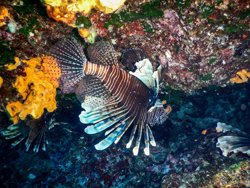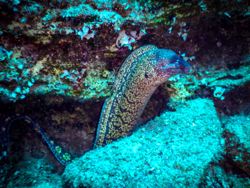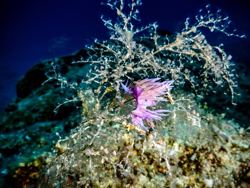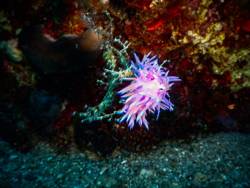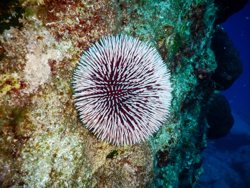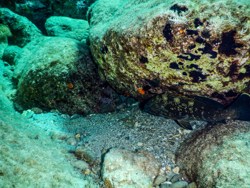Marine Life in the Gulf of Messara – South Crete
The Gulf of Messara hosts extensive seagrass meadows of Posidonia oceanica, covering up to 40% of the seabed at depths from 1 to 35 meters. These underwater meadows play a crucial ecological role: they serve as nurseries for young fish, stabilize the seabed, and protect the coastline from erosion.
Environmental & Hydrodynamic Characteristics
The gulf is relatively enclosed, with calm water movements that favor the growth of dense Posidonia meadows—especially in the western part at depths greater than 5 meters. In contrast, the eastern part, affected by strong southern winds and frequent wave activity, has sparse or no Posidonia coverage.
Marine Flora
- Posidonia oceanica: An endemic Mediterranean seagrass species that forms vast underwater "meadows."
- Sponges & Sea Anemones: Typically found in rocky formations and crevices along the seabed.
Marine Fauna
- Fish Species: Diplodus sargus (white seabream), Trachinus draco (greater weever), Sparus aurata (gilthead seabream), Serranus cabrilla (comber).
- Sea Turtles: Caretta caretta and Chelonia mydas; Caretta caretta uses local beaches for nesting.
- Octopus & Squid: Octopus vulgaris and Sepia officinalis are frequently found among the rocks.
- Nudibranchs & Benthic Invertebrates: Rare species such as Pseudaphya ferreri attract divers and marine photographers.
- Seafloor Predators: Including Palinurus elephas (spiny lobster), Epinephelus marginatus (dusky grouper), and Maja squinado (spider crab).

Conservation & Protection Efforts
- Research & Mapping: Underwater drones are used to map and monitor the condition of the seagrass meadows.
- Sea Turtle Protection: Organizations like ARCHELON conduct nest monitoring and hatchling release programs to support Caretta caretta populations.
- Environmental Awareness: Educational programs, guided workshops, and exhibitions are held in collaboration with institutions such as Cretaquarium.

